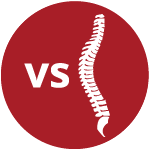Remedial Sports Massage vs. Musculoskeletal Therapy
Considering a Remedial or Sports massage therapist, call Robert first for free advice on how he can assist you at 0410 811 830. Muscles are tight for a reason!
It’s time to move away from symptom-chasing and begin addressing the neurological origin of muscle tension.
The future of musculoskeletal therapy lies in treating the nervous system, not the muscle.
It’s time for a paradigm shift.


